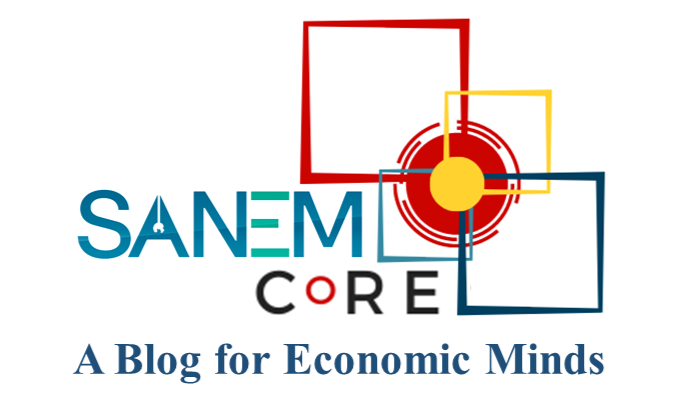Digital Public Infrastructure (DPI) refers to the technological and institutional framework that supports the delivery of e-government services to citizens, businesses, and other stakeholders. The DPI scenario in Bangladesh has been improving rapidly over the past decade with the vision to promote Bangladesh as a knowledge-based economy and bridge the digital divide. However, according to the United Nations E-Government Development Index (EGDI), the country has ranked 111th among the countries all over the world in 2022. This index provides an overview of how well a country is leveraging digital technologies to deliver public services and represents the composition of three important indicators in e-governance, i) provision of online services ii) telecommunication connectivity iii) human capacity. The position of Bangladesh indicated that there is a large gap to work on online services, enhancing connectivity and improving human capacity. The “Digital Bangladesh” campaign that was launched in 2009, has been the cornerstone of the transformation and now aiming towards “Smart Bangladesh” by 2041 by ensuring the use of digital technologies, financial inclusion, and overall socioeconomic development.
According to the e-Government Master Plan for Digital Bangladesh, there are 366 digital services. All these services have significantly enhanced public service delivery to the citizens. Aspire to Innovate (a2i) mentioned the substantial economic impact, as the DPIs saved $21.8 billion, 19.1 billion working days and 12.9 billion visits to government offices. The establishment of the network of Digital Centres is one of the foundational elements of DPIs in Bangladesh. As per a2i, more than 8,858 centres have been established across the country. The centres provide over 300 public and private services to citizens including birth registration, land records, utility payment and telemedicine, especially in the rural areas. Bangladesh National Portal is another centralized digital gateway that links to more than 52,200 offices of the government and numerous services for citizens. The portal is designed to facilitate the flow of information and the delivery of services from the Union Council to the Ministry level. Additionally, National Identity (NID) System and Porichoy gateway are playing a significant role. NID system enables citizens to validate their identity for service delivery, such as financial transactions, social safety net programs, and healthcare services. The gateway server known as Porichoy, was launched in 2019 which has made the NID verification easier and secure. The National Service Access Helpline (333) is a voice-enabled service designed for citizens who may not have easy access to internet. It offers several services, including information requests, grievance reporting, and telehealth services. For ensuring the access to financial services, the government launched the payment gateway named ekPay, which enables citizens to make convenient digital payments for utility services. Other than these, government initiated Surokkha app, which was a good example of digital solutions for public health crises. The platform facilitates vaccine registration, appointment scheduling, and certificate issuance. As per a2i, Surokkha had supported the nationwide COVID-19 vaccination program with over 131 million registrations.
The DPI scenario of Bangladesh faces some challenges including digital divide. The digital divide between urban and rural areas is there, as many citizens still lack access to the internet and digital literacy. This disparity reduces their capacity to avail the benefits of DPI. The funding for infrastructural development and information sharing is also a challenge towards digitalization. Additionally, ensuring the security of digital services and protecting citizens’ data has become a critical challenge. The need for implementing strong cybersecurity systems and raising awareness at the individual level is crucial for preserving the general digital environment. Furthermore, ensuring the sustainability of the digital initiatives is another challenge. Long-term planning, investment and policy support are necessary to manage and utilize the digital system efficiently.
For a proper digitalized system, bridging the digital divide should be the top priority. Ensuring broadband internet availability in areas lacking sufficient access, especially rural regions, is essential. Measures need to be taken to enhance the knowledge of the citizens regarding the technological aspect more often referred to as digital literacy. The availability and affordability of the internet will guarantee that all citizens can access DPI. Opportunities in Bangladesh also include an aspiration to accommodate new technologies like artificial intelligence, blockchain, and IoT to augment service provision and innovation. It also opens up new opportunities for rationalization of the work and better delivery of services by the authorities. Promoting public-private partnerships is needed for the sustainable development of DPI. Collaboration with private sector companies can bring the technical expertise, innovation, and investment needed to expand and improve digital services. On the other side, the policies should focus on inclusivity, accessibility and affordability of digital services. Moreover, establishing robust monitoring mechanisms to assess the impact of DPIs will be important for continuous improvement.
The existing challenges such as the digital divide, cybersecurity, sustainability, and the capacity of citizens need to be addressed to ensure the acceleration towards sustainable digitalization. Additionally, emphasizing on innovation and emerging technologies will be crucial for overcoming these difficulties. Finally, the successful implementation of the current DPI initiative as well as the inauguration of new DPIs may contribute to socioeconomic development and achieve the vision of “Smart Bangladesh” by 2041. The long-term development for all the citizens is possible if the county will continue investing in digital infrastructure and implementing inclusive policies.



RECENT COMMENTS